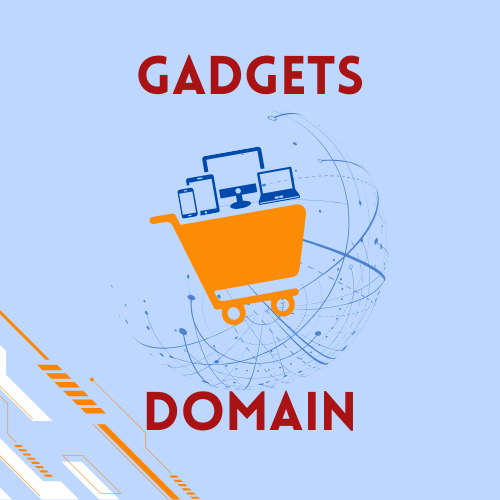When most people think about electronics, they picture smartphones, laptops, or smart home gadgets. But behind every device we rely on daily lies a set of unsung heroes: networking and power. These two elements are the lifeblood of modern electronics, connecting our devices, keeping them alive, and enabling the seamless experiences we often take for granted.
In this article, we’ll take a closer look at how networking and power shape the world of electronics, why they matter to consumers and businesses alike, and where innovations are pushing the boundaries of what’s possible.
The Role of Networking in Electronics
Let’s start with networking. Imagine your phone without Wi-Fi or mobile data. It would still work as a camera, maybe a calculator, but it would lose its greatest strength: connection. Networking is what allows your devices to “talk” to each other and to the wider world.
1. Wired vs. Wireless: Different Roads to the Same Goal
Networking in electronics typically falls into two categories: wired and wireless.
- Wired networking (like Ethernet or USB connections) offers speed, reliability, and security. That’s why servers, desktop setups, and many industrial systems still depend heavily on cables.
- Wireless networking (such as Wi-Fi, Bluetooth, and 5G) gives us mobility. It’s the reason you can stream a movie on your couch, join a video call from a coffee shop, or control your thermostat from across town.
Each has its trade-offs, but together they create a flexible ecosystem where devices can meet users’ different needs.
2. The Rise of the Internet of Things (IoT)
Networking becomes even more exciting when you add the Internet of Things (IoT) into the picture. IoT refers to the ever-growing web of connected devices — from smart fridges and wearables to entire industrial systems. By 2030, experts predict billions of devices will be connected, all exchanging data in real time.
This isn’t just about convenience. Networking in IoT enables:
- Smarter homes with automated lighting, climate control, and security.
- Efficient businesses where sensors monitor supply chains or track energy use.
- Safer healthcare through connected wearables that track patient vitals remotely.
Without networking, these possibilities wouldn’t exist.
Power: Fueling the Electronics Revolution
While networking connects devices, power makes them possible in the first place. Think about how many times you’ve panicked seeing your phone at 2% battery. Power is everything — but it’s not just about plugging into the wall.
1. Batteries and Portability
The shift from bulky desktop machines to slim laptops and mobile devices was powered (literally) by battery innovation. Lithium-ion technology has made it possible for devices to run longer, charge faster, and weigh less.
But challenges remain:
- Batteries degrade over time.
- Charging speed often lags behind usage demands.
- Safety issues (like overheating) need careful management.
That’s why companies are experimenting with new solutions such as solid-state batteries, which promise higher energy density and improved safety.
2. Renewable Power and Sustainability
Electronics don’t exist in a vacuum. They’re part of a larger conversation about sustainability and energy use. Devices today are becoming more efficient, consuming less power while delivering higher performance.
Solar-powered chargers, energy-efficient processors, and even low-power networking protocols like Zigbee or LoRa are all examples of how electronics are moving toward greener solutions. For businesses, this isn’t just a moral choice — it’s a financial one. Lower energy consumption means lower costs, which is a win-win for both the company and the planet.
3. Wireless Power Transfer
One of the most intriguing developments in recent years has been wireless charging. While most people are familiar with Qi wireless charging pads for phones, the concept extends far beyond that. Engineers are exploring ways to transmit power across rooms or even between devices.
Imagine a future where your smartwatch charges just by being near your desk lamp, or your electric car tops up while parked in your garage without ever touching a cable. Networking made us wireless in terms of data — now, power is following the same path.
Networking and Power: Working Together
Networking and power aren’t separate lanes. They intersect in fascinating ways. Take 5G, for example. The faster speeds and lower latency of 5G unlock new capabilities for IoT devices, but these devices also require efficient power management to remain practical.
Or consider Power over Ethernet (PoE) technology. This clever approach allows both electricity and data to be transmitted through the same cable. It simplifies installation, reduces clutter, and enables devices like security cameras or access points to run efficiently without needing separate power sources.
The marriage of networking and power is where much of the real innovation in electronics happens.
Why This Matters for You
So, why should consumers, entrepreneurs, or even hobbyists care about all this? Because networking and power are at the heart of every decision you make about electronics.
- If you’re buying a new gadget, knowing about networking helps you pick the right features (Wi-Fi 6 vs. 5G, Bluetooth versions, etc.).
- If you’re setting up an office, understanding power efficiency can save you thousands in energy bills.
- If you’re a business owner, these technologies directly impact your ability to innovate, stay competitive, and adapt to new customer expectations.
In short, the more you know about networking and power, the smarter your decisions will be.
The Future Ahead
We’re standing on the edge of a new electronics era. Networking will continue to blur the lines between devices and platforms, while advances in power will make them more sustainable and independent. From self-powered IoT sensors to wirelessly charged vehicles, the future is shaping up to be both connected and efficient.
The question is: how ready are you to adapt to these changes?
Networking and power may not be the flashiest parts of electronics, but they are absolutely essential. They are the hidden gears that make our devices smarter, faster, and more reliable. By understanding these systems, you not only become a more informed consumer but also gain insight into where technology — and the opportunities within it — are heading.
If you’re looking for electronics that bring these concepts to life, check out our curated selection at GadgetsDomain.com. You’ll find innovative products designed with both networking and power efficiency in mind.
Now it’s your turn:
What’s the one device you couldn’t live without — and how would your daily life change if it lost either its power source or its network connection?
Share your thoughts in the comments below. Let’s start a conversation about how networking and power are shaping the future of electronics.

